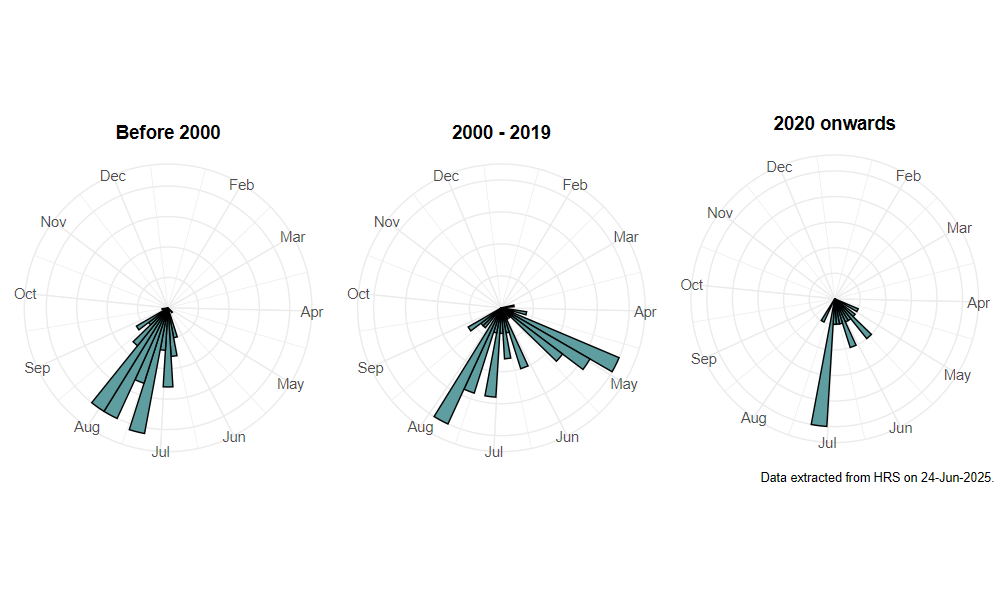Cheilosia barbata Loew, 1857
Identification
Identification difficulty = 3. ![]()
![]() according to Ball & Morris, 20241
according to Ball & Morris, 20241
Biology
Very little is known about the biology of this species. The larva is undescribed. Adults occur on Chalk downs or in woodlands on clay, or occasionally on sandy soils, as in Surrey where they visit a wide range of white and yellow flowers including most white umbels and Wild Parsnip Pastinaca sativa.
Flight period
The following plots show the number of unique records per week excluding those reported to be of immature stages.

Status
Lower Risk (Nationally scarce) - Ball & Morris, 20142. Notable - Falk, 19913.
Distribution
Mainly recorded from southern downland extending from Kent, through Surrey and Sussex to Hampshire, and in woodlands on the clay through Oxfordshire to Warwickshire. There is also a small population on Chalk in Cambridgeshire.

Trends
The following plots show the Frescalo TFactor vs year and a map of the rescaled frequency (all records) for the species.
-
Ball, S., & Morris, R. (2024). Hoverflies of Britain and Ireland. WILDGuides (3rd ed.). Oxford: Princeton University Press. ↩
-
Ball, S., & Morris, R. (2014). A review of the scarce and threatened flies of Great Britain. Part 6: Syrphidae. ( No. 9). Species status (pp. 1–130). Peterborough: JNCC. ↩
-
Falk, S. (1991). A review of the scarce and threatened flies of Great Britain. ( No. 39). Research and Survey in Nature Conservation (pp. 1–194). Peterborough: NCC. ↩